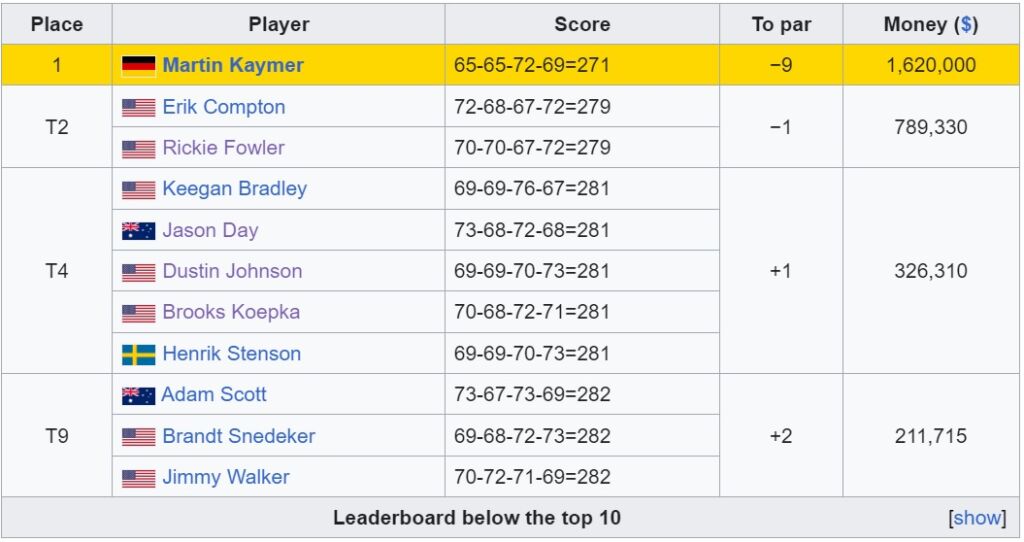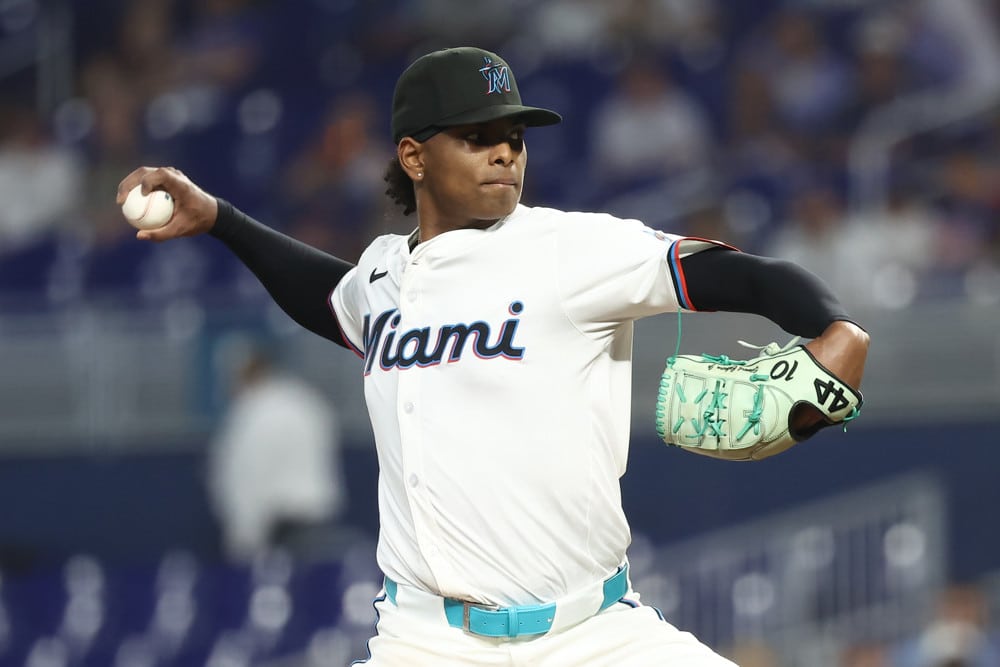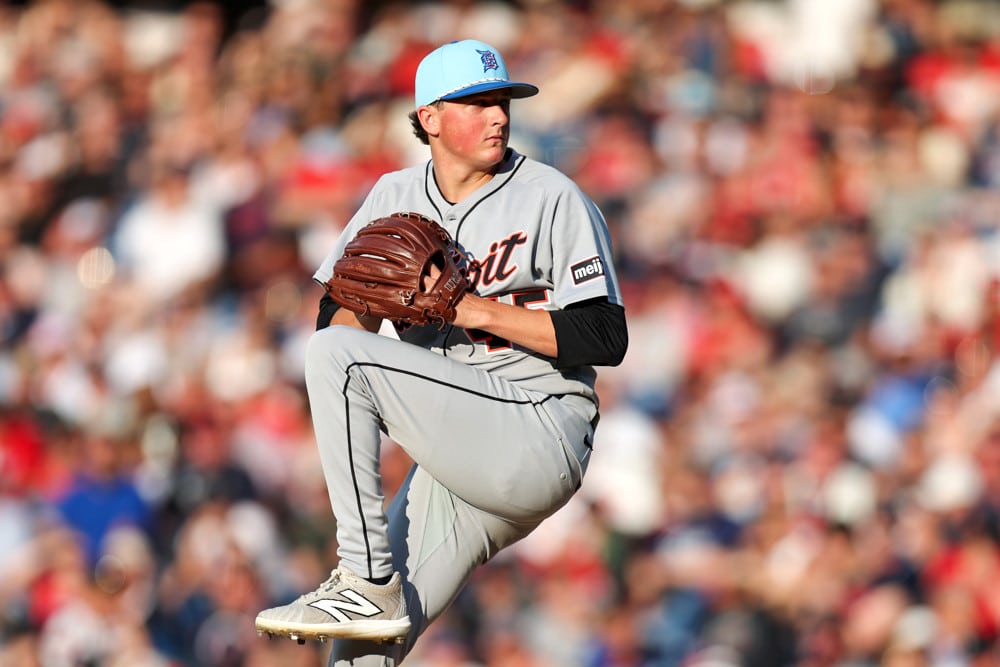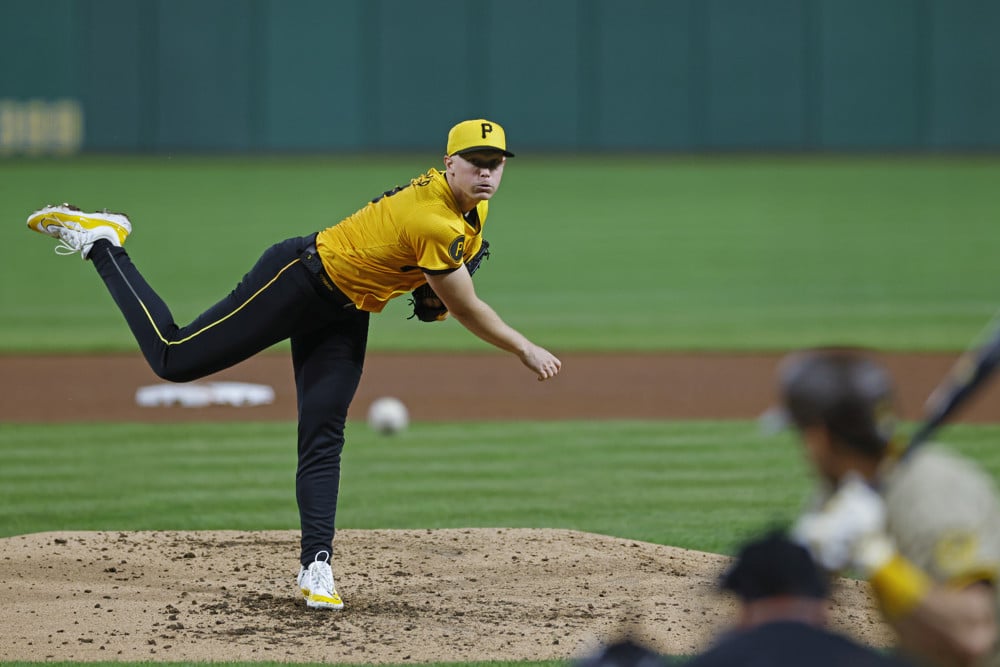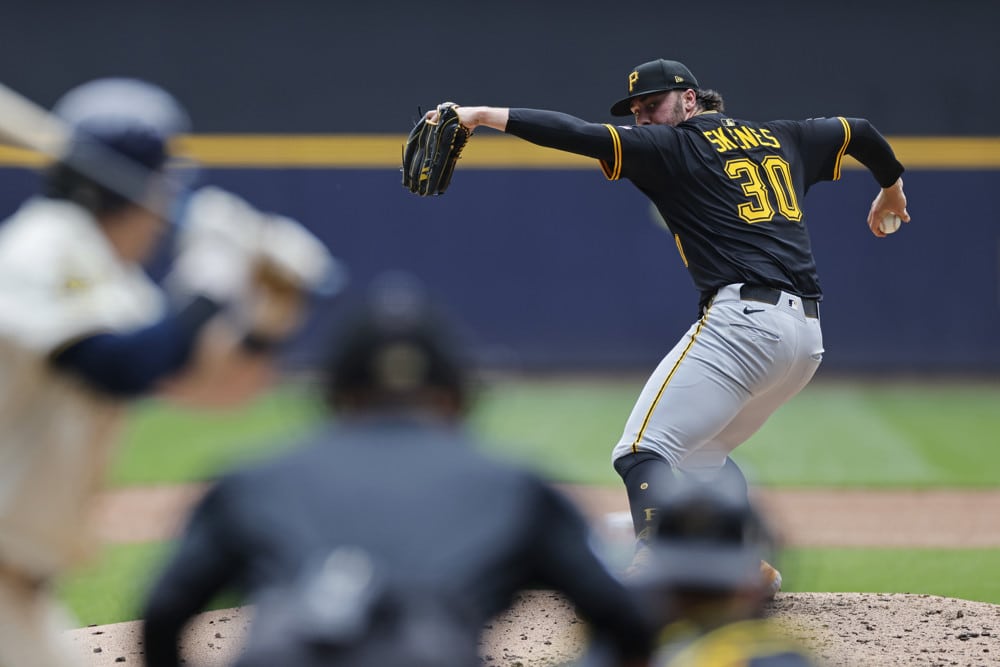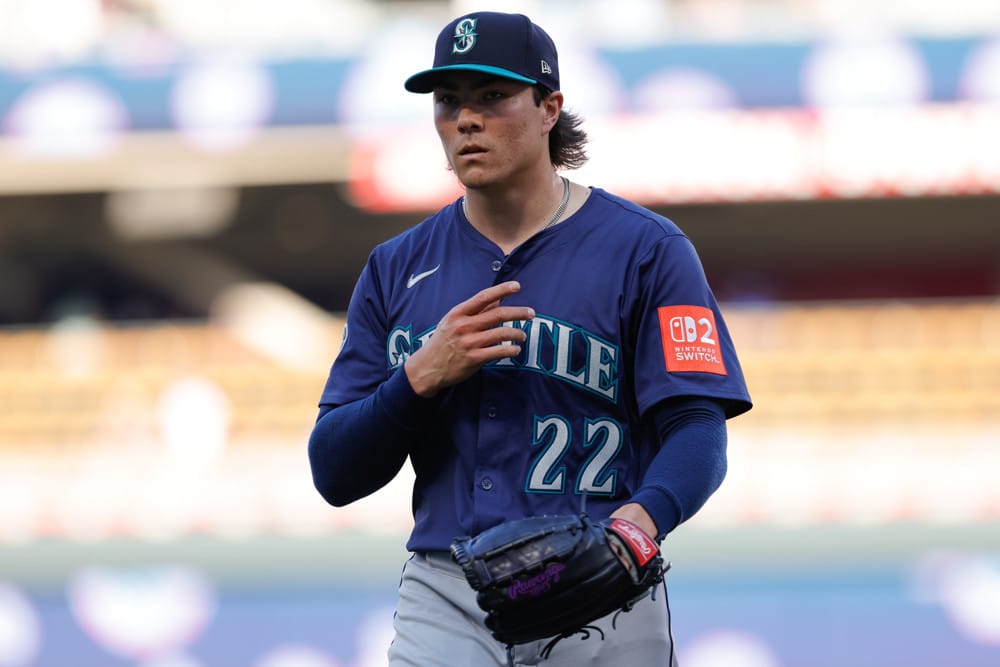It’s time for the third major championship of the year. A full field takes on the difficult Pinehurst No. 2 for the 2024 US Open. As always, here is an early preview and deep dive to the 2024 US Open, including tips on how to breakdown and bet the event.
Go here for more Golf content!
The Golf Course
Here are some key facts about Pinehurst No. 2:
Opened: 1907
Architects: Donald Ross
Renovations/Restorations
- 1974: Robert Trent Jones
- 1999: Rees Jones
- 2010: Bill Coore and Ben Crenshaw
Other Majors/Events Hosted
- 1936: PGA Championship (won by Denny Shute)
- 1951 Ryder Cup (won by USA 9.5-2.5)
- 1999 US Open (won by Payne Stewart)
- 2005 US Open (won by Michael Campbell)
- 2014 US Open (won by Martin Kaymer)
Par: 70
Yards: 7,543 Yards
There does not appear to be any lengthening to Pinehurst No. 2 since the 2014 US Open. But Pinehurst No. 2 isn’t antiquated. A mid-7,500-yard golf course is still long enough to challenge professional golfers. And it has defenses that distance alone cannot overcome.
Agronomy:
- Greens: Champion UltraDwarf Bermuda
- Fairways: Bermuda
- Rough: None (sandy waste areas and wiregrass)
The agronomy at Pinehurst No. 2 is a very important feature of its entire history.
The No. 2 course started as a nine-hole course to alleviate the overcrowding of the No. 1 course. However, due to its growing popularity, Donald Ross expanded and redesigned No. 2 to 18 holes in 1907.
It was originally all sand fairways, but over the years, Donald Ross began experimenting with various strands of bermuda to incorporate swales and ridges that now are synonymous with the golf course. The final green at No. 2 was converted to all grass by 1936.
The No. 2 course originally featured wide bermuda fairways. Instead of rough, however, off the fairway featured native wire grasses and sandy waste areas. But with the club desiring to modernize the golf course in the 1970s, Robert Trent Jones removed all of the native areas and added thick bermuda rough. In addition, Pinehurst added length.
This iteration of Pinehurst No. 2 lasted until 2010, when Bill Coore and Ben Crenshaw were enlisted to restore the golf course to its roots. As such, the bermuda rough was uprooted, and native wire grasses and sandy waste areas were reclaimed.
And while the golf course had its fair share of critics when unveiled in 2014, Coore and Crenshaw’s restoration of Pinehurst No. 2 is very well acclaimed.
Pinehurst No. 2 is an extremely popular golf destination, particularly for buddy trips. If you’re diehard enough to be reading this column in December, chances are you’ve played it. But if you haven’t, here are a few videos to show you the beauty and magic of Pinehurst No. 2.
First, here is a hole-by-hole narration of each hole at Pinehurst No. 2.
Next, here’s a feature on the No. 2 course from No Laying Up’s popular Tourist Sauce series:
Finally, check out the full final round of the 2014 US Open, won by Martin Kaymer:
For 2024, the only significant change to the golf course was the addition of more wiregrass to the sandy waste areas off the fairway. This will up the risk of sending a ball through the fairway and into the wiregrass. It’ll be a 50/50 proposition whether one walks up to their ball and sees a clean lie or decides where the best place would be to punch out back to the fairway for their third (or even give themselves a penalty stroke).
Betting Strategies
The conversation about the No. 2 course at Pinehurst can transition into what types of golfers to target for the 2024 US Open. To do that, one needs to revisit what happened in 2014.
Here’s the final leaderboard from the 2014 US Open (per Wikipedia):
Martin Kaymer was head and shoulders better than the rest of the field. After 36 holes, he led by 6 over Brendon Todd. His lead shrunk to 5 after 54 holes. But thanks to a very steady final round 69, he cruised to a very comfortable win.
Here are key points about each area of the game and how that applies to the No. 2 course at Pinehurst. This will help bettors make picks for the 2024 US Open.
Off the Tee
While the No. 2 course (at its best) plays firm and fast, don’t automatically assume that players are afforded the opportunity to pull less than driver to find better control without sacrificing too much distance. In the final round, Martin Kaymer pulled driver on 12 of 14 Par 4’s and 5’s. Most players adopted this strategy.
There are opportunities for the USGA to move up or push back tee boxes to promote different strategies off the tee, though. This is primarily seen on the drivable Par 4, 3rd, and 13th. The USGA played with tee boxes all week to promote more strategy and make players’ tee shot club selection difficult.
But for the rest of the Par 4s and 5s, players see a wide fairway and a hole that plays very all out in front of them. The decision to pull driver is very easy.
However, the targets on the greens are so small (due to their significantly undulating nature) that the No. 2 course is one of the last remaining golf courses played in professional golf, where the angle into each green still matters. As such, players do have to possess some sort of semblance of control with their driver.
However, the results of the 2014 leaderboard suggest that length is an advantage at Pinehurst No. 2. Eight of the 11 players inside the Top 10 at the 2014 U.S. Open were inside the Top 50 in driving distance heading into the tournament. And of these 11, six of them were well outside the Top 100 in driving accuracy. 2014 U.S. Open winner, Martin Kaymer, was 10th in SG-OTT and 47th in driving distance.
Bombers Dustin Johnson, Jason Day, Brooks Koepka, and even Jimmy Walker and Keegan Bradley (yes, both ranked 13th and 21st in driving distance heading into the U.S. Open, respectively) made up most of the rest of the Top 10.
During the tournament, length once again proved to be advantageous for the Top 10. Collectively, the Top 10 averaged 298.6 yards off the tee at the 2014 U.S. Open. That is significantly higher than the field average of 284.5. Eight of the Top 10 golfers ranked inside the Top 20 in driving distance on the week at the 2014 U.S. Open. Conversely, they each hit the fairway 67.4% of the time, which was less than the field average of 70%.
Pinehurst allows anyone to show up with whatever they’d like to do off the tee and lets them execute it. They just have to pull it off. But length is statistically proven to be an edge and a solid predictor of the results of of not only any golf tournament but especially the U.S. Open. And considering players have even more focused on adding as much length as possible in their game, expect more of the same this year.
Approach Shots
Here is the proximity data from the final round of the 2014 US Open. This information was compiled from the Round 4 hole locations, communicated approach shot distances on NBC, and estimated ones based on a comparison from the location of their approach shot and its location on Google Earth. This will help bettors make picks for the 2024 US Open.
- < 100 Yards: 11.1% (2 shots – drove the green)
- 100-125 Yards: 0.0%
- 125-150 Yards: 5.6% (1 shot)
- 150-175 Yards: 16.7% (3 shots)
- 175-200 Yards: 27.8% (5 shots)
- 200-225 Yards: 22.2% (4 shots)
- 225+ Yards: 16.7% (3 shots)
Under the assumption that the No. 2 course will play as firm as it did in 2014, there is no lengthening to the course and that players will hit driver in 2024 as often as they did in 2014, make the following adjustment to the proximity buckets for the 2024 US Open to account for the gains in distance over the last decade:
- < 100 Yards: 11.1% (2 shots – drove the green)
- 100-125 Yards: 0.0%
- 125-150 Yards: 16.7% (3 shots)
- 150-175 Yards: 22,2% (4 shots)
- 175-200 Yards: 22.2% (4 shots)
- 200-225 Yards: 16.7% (3 shots)
- 225+ Yards: 11.1% (2 shots)
Pinehurst No. 2 also is a golf course that rewards precise iron shots. The turtleback nature of the greens tightens the margins between a really good shot and a really poor one. Consider the following examples:
Example #1: In the final round of the 2014 US Open, Graeme McDowell and Zach Johnson teed off on the Par 3 191-yard 9th within 10 minutes of each other. Each of them chose 7 iron off the tee.
On Sunday, the optimal shot shape was to use a sideboard on the left side of the green to funnel the ball back toward the hole. Protecting the green is a large false front that repelled short approach shots back down the green into a collection area.
Graeme McDowell hit his ball to about 28 feet from the pin on the left side of the green. But his approach shot was a little too far left and short. As such, the ball slowly rolled back down off the green to the collection area.
10 minutes later, Zach Johnson hit his ball to about 25 feet from the pin on the left side of the green. But he nailed his carry distance and perfectly allowed the sideboard to funnel the ball back across the green and into the hole for an ace.
Two almost identical iron shots of similar lengths. Two wildly different results. This is Pinehurst No. 2 in a nutshell.
Example #2: On his opening hole on Sunday, Henrik Stenson hit a beautiful approach shot from 150 yards to about 10 feet behind the pin. However, he carried the ball a little too far and was unable to control its spin once it hit the green. The ball then caught a ridge and rolled down into a collection area 35 feet away from the hole. He struggled to get up and down to save par.
These two examples show how critical it is to have immense control over one’s irons.
In addition, good iron players mostly populated the final Top 10 at the 2014 U.S. Open. Heading into the tournament, Martin Kaymer ranked 43rd in Strokes Gained – Approach. Keegan Bradley, Dustin Johnson, Brooks Koepka, Henrik Stenson, Adam Scott, and Jimmy Walker all were ranked 40th or better in that category ahead of the U.S. Open as well.
And while there were no strokes gained kept at the 2014 U.S. Open, the best iron players separated themselves on the leaderboard. Collectively, the Top 10 at the U.S. Open hit 63.3% of their greens in regulation. That is significantly more than the field average of 56.5%. There is a very fine margin between a great shot and a terrible one on the repelling turtleback greens at Pinehurst. Missing one’s mark by a foot or two could be the difference between a great look at birdie and trying to chip back up to the green from 30 yards away.
Favor those who not only hit their irons well from the proximity distances given but who are also trending in the right direction with their irons ahead of the US Open. While the season-long stats might not have suggested it, several players were trending well with their irons ahead of the U.S. Open. Here are a few examples:
Erik Compton is a great example of this. He was only 89th in Strokes Gained Approach heading into U.S. Open. However, here are a few recent results ahead of the tournament with his irons:
- HP Byron Nelson: +1.42 strokes gained approach (CUT)
- PLAYERS Championship: +4.96 strokes gained approach (T34)
- Zurich Classic: +4.08 strokes gained approach (T5)
- Shell Houston Open: +5.88 strokes gained approach (T12)
- Arnold Palmer Invitational: +5.68 strokes gained approach (T5)
Sandwiched in between these great iron performances were two complete clunkers. He lost 4 strokes on approach at the Memorial and a whopping 8.48 at Harbour Town. This kept him hidden from view as one of the better iron players in the field, as his other performances leading up to the U.S. Open were elite.
He wasn’t alone. Martin Kaymer was in the midst of stringing together a bunch of elite iron performances ahead of the U.S. Open, including his fantastic showing at his prior month’s victory at the PLAYERS Championship. Keegan Bradley, Henrik Stenson, Dustin Johnson, and Jimmy Walker also were trending up with their irons before Pinehurst. Not only target good iron players but also ones trending up as well (even if the season-long statistics don’t back that up).
Around the Green & Putting
Ask anyone who plays Pinehurst No. 2 what the most challenging aspect of it is. They’ll almost certainly say it’s the interaction between the green and the greenside surrounds. Pinehurst No. 2 asks you to have a wide array of chip shots in the arsenal to try and get up and down from tight bermuda lies. The targets on the greens are so small that choosing the right shot from off the green is a must.
Sometimes, players need to utilize bumps and runs to get up and down. Other times, they need to go upstairs and land the ball with lots of spin to stop it. Or hit delicate bunker shots to a target the size of a recycling bin. Or even realize that the best play is to pull putter. Like at Augusta National, it takes the perfect harmony of creativity and precision to get up and down from around the green at the No. 2 course.
Before the US Open, a popular piece of advice may be to heavily favor around the green performance on the betting card and in DFS lineups.
But based on the 2014 US Open, this wasn’t the case. The average ranking in Strokes Gained – Around-the-Green of everyone inside the Top 10 that week heading into the US Open was 114th. That’s the worst collection of scramblers inside the Top 10 at a US Open since at least 2010.
To further demonstrate this point, consider that the runaway winner of the 2014 US Open, Martin Kaymer, ranked 163rd in Strokes Gained – Around-the-Green, leading into the 2014 US Open. And this wasn’t an anomaly. Per a review of Martin Kaymer’s skillset profile on DataGolf, he was woefully deficient around the green to his peers. He also was 114th in strokes gained putting before his victory.
Yet, Martin Kaymer finished 1st in Scrambling at the 2014 US Open, 1st in putting average, and second in three-putt avoidance. So what gives? Did he just have the week of his life on and around the green?
This was the primary question I had as I sat through five hours of coverage to refresh my memory of Pinehurst No. 2 at the 2014 US Open. However, once I saw the golf course again, the answer to this inconsistency was clear for four reasons.
1. Martin Kaymer refused to use a wedge from off the green to get up and down. The coverage went to great lengths to showcase these decisions from Kaymer and often disagreed with his decisions to use a putter. However, this was a strategy he stuck with for the entire tournament. And considering the tight lies around every green, one has the option of using putter if they’re more comfortable with it.
2. As mentioned earlier, precise iron shots are rewarded immensely at Pinehurst. Poor ones are punished. Hence, better iron players can mask their deficiencies around the green simply by being more precise with their approach shots all week.
3. Long putts routinely ran off the green. The greens at Pinehurst were so fast and slick that any putt hit firmly ran the risk of not only running well past the hole but off the green entirely. This is another argument that precise iron play at Pinehurst No. 2 is of the utmost importance.
4. How often are professional golfers actually tested with the greenside surrounds they’ll face at Pinehurst No. 2 in tournament play? Are they actively practicing chipping off of tight bermuda lies onto lightning-fast and undulating Donald Ross greens? Are they trying to judge how much sand is beneath their golf ball when chipping off of a sandy waste area?
These aren’t situations professional golfers face a lot on the PGA Tour. As such, are the shots that make up the bulk of one’s Strokes Gained – Around the Green even relevant for handicapping purposes?
This is a long-winded way of saying that relying too heavily on scrambling and putting stats for your 2014 US Open handicap might not yield the best results.
Use this area in your handicap based on the results on golf courses with similar types of conditions around the green. A few come to mind:
- Memorial Park (Houston Open) – tight bermuda lies onto fast, undulating greens.
- The Concession Golf Club (WGC Concession) – ditto
- Augusta National – tight (albeit overseeded ryegrass) lies onto fast, undulating greens.
- TPC Sawgrass—TPC Sawgrass often allows players to freely pull their putter from off the green. This has helped players like Viktor Hovland and Bryson DeChambeau, who are not comfortable chipping off of tight lies, succeed at the golf course.
- Albany GC: Ernie Els designed Albany with principles of Pinehurst No. 2 in mind. The greens are also turtle-backed and feature run-off areas to tight bermuda lies. While an exhibition event, this could be an underrated comp course to refer to.
One can also use this area based on their intimate knowledge of players who should be expected to do well in a tournament that demands lots of difficult and various chip shots. Players like Jordan Spieth and Cameron Smith are all world scramblers and are more than adept at handling the conditions.
One shouldn’t just look at a list of players who excel in Strokes Gained—Around the Green. The player who might rank 30th on this list might not have the experience or skill necessary to get up and down at Pinehurst No. 2, as they might fare better at golf courses featuring heavy rough around each green.
Trying to figure out who will excel on and around the greens is going to be tricky. The challenges players will face this week simply won’t relate to anything else they usually face on the PGA Tour, LIV, or DP World Tour. And considering the in-tournament performance on and around the greens doesn’t really match their skill levels heading in, there will be some head-scratching final results in these departments for players who ultimately play best at Pinehurst.




